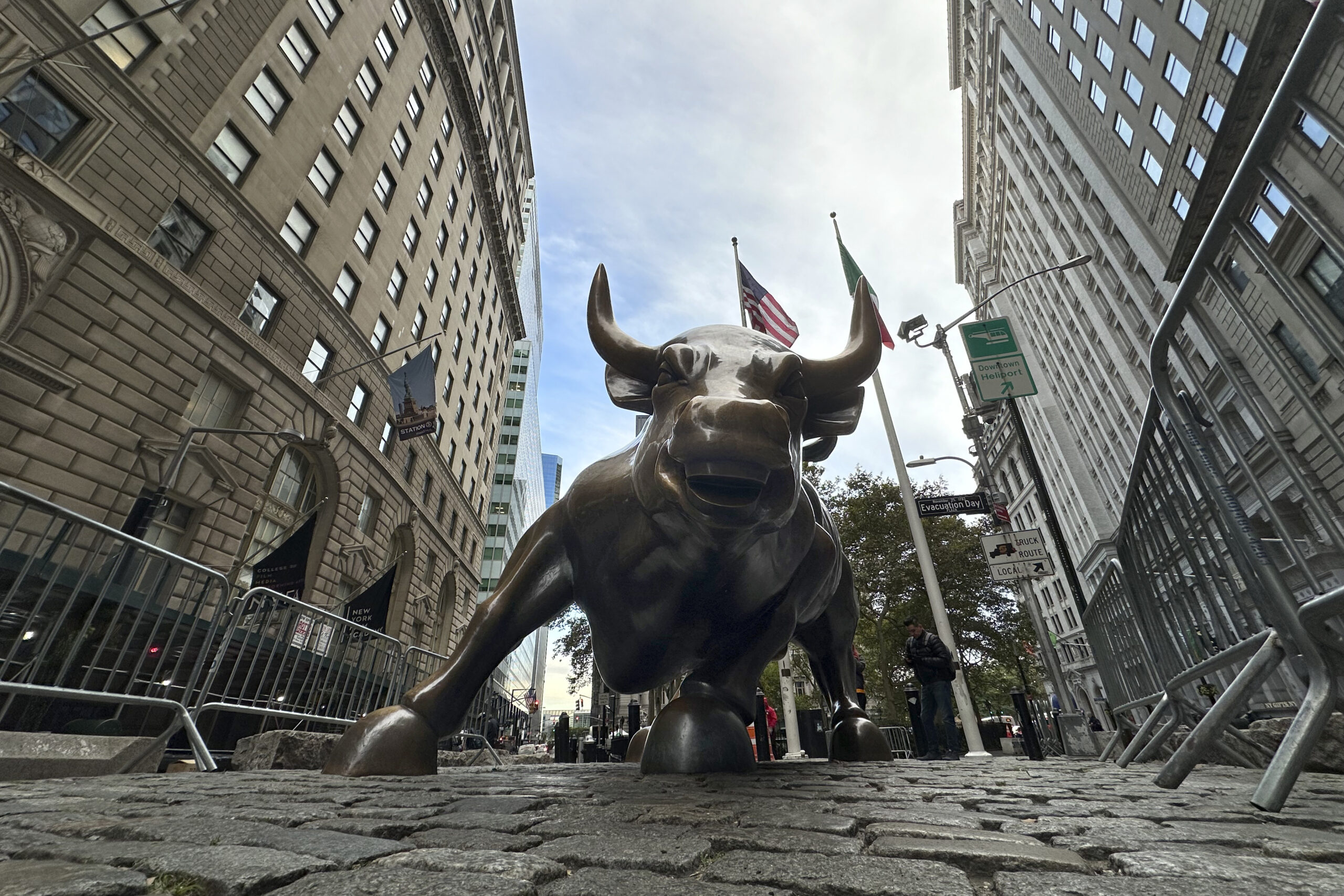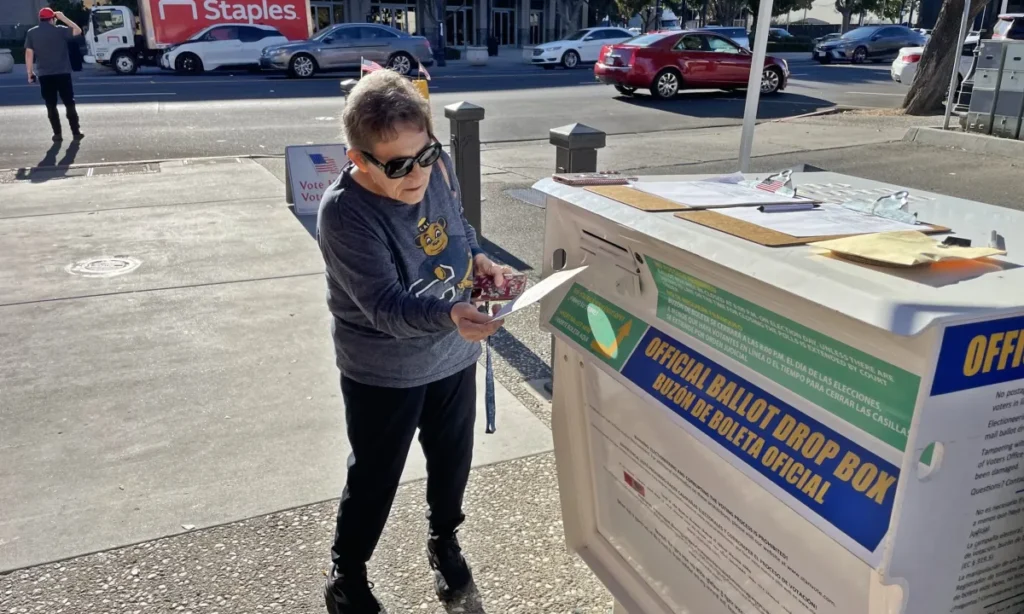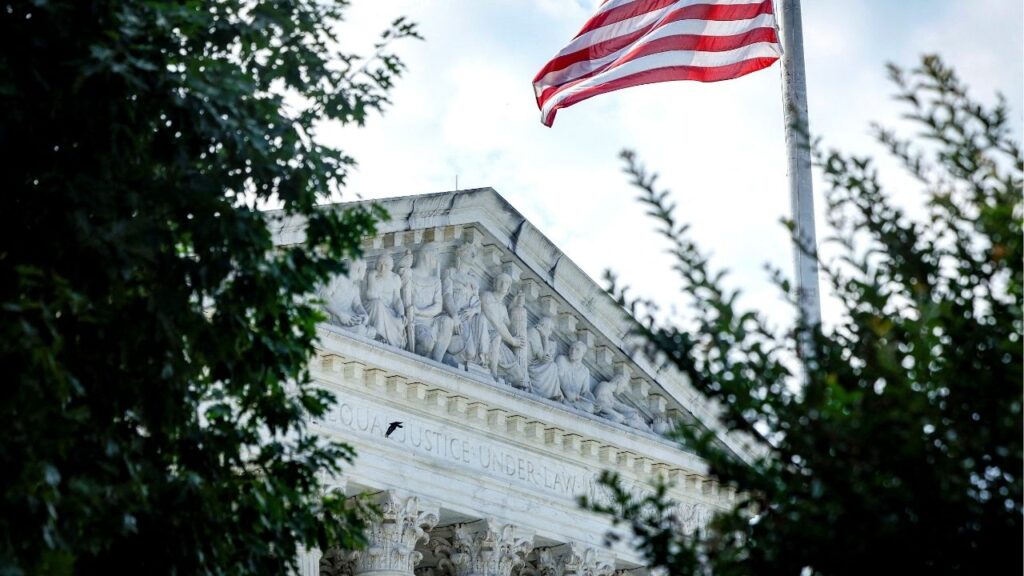Wall Street retreats from record highs as oil prices plummet and tech stocks struggle, with the S&P 500 down 0.9% in afternoon trading. (AP/Peter Morgan)

- Energy stocks face sharp losses as crude oil prices tumble 4%, with Exxon Mobil dropping 2.5% amid concerns over Chinese demand.
- Tech sector hit hard as Nvidia falls 5.1% and ASML's U.S. stock drops 17.7% following mixed quarterly results and market outlook.
- Financial companies show resilience with Bank of America and Charles Schwab posting gains after better-than-expected profit reports.
Share
|
Getting your Trinity Audio player ready...
|
NEW YORK — Wall Street is pulling back from its records on Tuesday as the price of crude oil tumbles and technology stocks falter.
The S&P 500 was down 0.9% in afternoon trading, a day after setting an all-time high for the 46th time this year. The Dow Jones Industrial Average was down 317 points, or 0.7%, with less than an hour remaining in trading, and the Nasdaq composite was 1.3% lower.
Exxon Mobil dropped 2.5%, and energy stocks fell to some of Wall Street’s sharpest losses after oil prices tumbled roughly 4%. A barrel of Brent crude, the international standard, has fallen back below $75 from more than $80 last week.
Crude prices have been weakening as China’s flagging economic growth raises concerns about demand for oil. At the same time, worries have receded about Israel possibly attacking Iranian oil facilities as part of its retaliation against Iran’s missile attack early this month. Iran is a major producer of crude, and a strike could upend its exports to China and elsewhere.
Related Story: Stock Market Today: Wall Street Drifts as Oil Rises and US Economy Shows More ...
Tech Sector Faces Headwinds
Nvidia was the heaviest weight on the S&P 500 and fell 5.1%. It’s a cooldown for the chip company, whose stock is still up 164.5% for the year so far on euphoria about the profits created by the boom around artificial-intelligence technology.
Stocks for companies across the chip industry fell after Dutch supplier ASML reported its latest quarterly results. CEO Christophe Fouquet said AI continues to offer strong upside potential, but “other market segments are taking longer to recover,” and ASML’s stock trading in the United States fell fell 17.7%.
Also dragging on the U.S. stock market was UnitedHealth Group. The insurer fell 7.8% despite reporting better results for the latest quarter than analysts expected. It lowered the top end of its forecasted range for profit over the full year.
Helping to keep the S&P 500 and Dow close to their records set on Monday were gains for several financial companies following better-than-expected profit reports for the summer.
Bank of America rose 1.5%, and CEO Brian Moynihan said his company benefited from higher average loans and fees for investment banking and asset management. Charles Schwab jumped 6.7% after likewise delivering better results than expected. More customers opened brokerage accounts at the company, helping to bring its total client assets to a record $9.92 trillion.
Walgreens Boots Alliance was another winner, up 13.2%, after topping analysts’ forecasts. The drugstore chain also said it will close about 1,200 locations over the next three years as it tries to turn around its struggling U.S. business.
Chipmaker Wolfspeed jumped 19.2% to trim its loss for the year to 68.8% after the Biden-Harris administration announced Tuesday that it plans to provide up to $750 million in direct funding to the company. The money will support its new silicon carbide factory in North Carolina that makes the wafers used in advanced computer chips.
Related Story: Stock Market Today: Wall Street Ticks Higher and Adds to Its Records
Bond Market Reacts to Economic Data
In the bond market, trading of Treasurys resumed after a holiday on Monday, and yields sank following a weaker-than-expected report on manufacturing in New York state.
The yield on the 10-year Treasury fell to 4.03% from 4.10% late Friday. Manufacturing has been one of the areas of the U.S. economy hurt most by high interest rates caused by the Federal Reserve in its efforts to slow the economy enough to stamp out high inflation.
Now, though, the Fed has begun cutting interest rates as it’s widened its focus to include keeping the economy humming instead of just fighting high inflation. And it looks set to continue cutting rates through next year, easing the brakes further off the economy.
Recent reports showing the U.S. economy remains stronger than expected have also raised optimism that the Fed can pull off a perfect landing where it gets inflation down to 2% without causing a recession that many had thought would be necessary.
Because of expectations for continued growth for the U.S. economy, as well as the boost that lower rates can give to corporate profits and to prices for stocks, strategists at UBS raised their forecast for how high the S&P 500 could go this year and next.
Led by Jonathan Golub, they’re calling for the S&P 500 to rise to 5,850 by the end of the year, up from their prior forecast of 5,600.
Related Story: US Adds a Robust 254,000 Jobs and Unemployment Dips to 4.1% in Sign of ...
In stock markets abroad, Chinese stocks fell sharply as doubts continue about whether the government will offer enough fiscal stimulus to prop up the world’s second-largest economy.
Stocks in Shanghai fell 2.5%, and Hong Kong’s Hang Seng index dropped 3.7%.
Indexes were mixed elsewhere in Asia and in Europe.
RELATED TOPICS:
Categories

Tornado in Southern Brazil Kills Six, Injures Hundreds



















